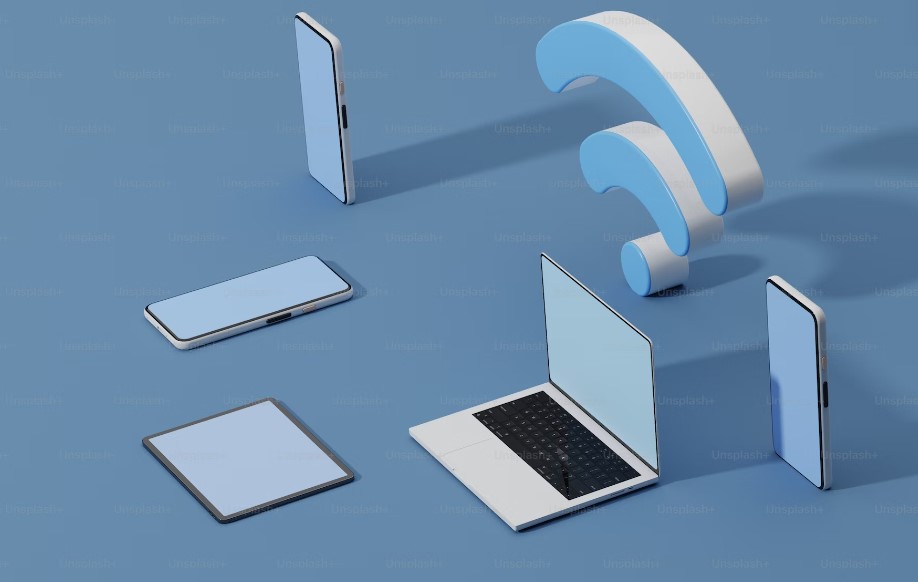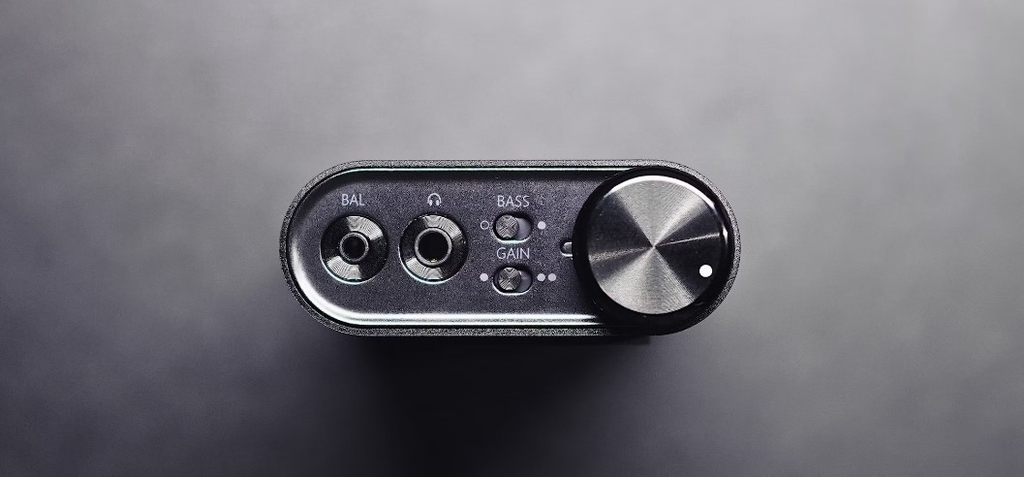How to Detect a Listening Device With Your Phone?
With the rapid advancements in surveillance technology, the fear of being monitored without consent has grown exponentially. But what if we told you that the very device you carry in your pocket every day, your smartphone, can be your first line of defense against unwarranted intrusion?
In this article, we will explore the techniques and tools you can use to uncover hidden listening devices and regain control over your personal space!

Use a Metal Detector App
A metal detector app is a mobile application designed to mimic the functionality of a traditional metal detector device using your smartphone’s built-in sensors. These apps utilize the magnetometer sensor, commonly available in most modern smartphones, to detect changes in the magnetic field caused by nearby metallic objects.
While they are primarily used for recreational purposes like finding lost coins or metal objects, they can also be used to identify specific types of listening devices that contain metal components. This option also can help you to find a listening device in your car.
How Does a Metal Detector App Work?
- Utilizes the Magnetometer Sensor: The magnetometer sensor in your smartphone measures the Earth’s magnetic field. When a metal object is present nearby, it disrupts this magnetic field, and the sensor can detect these changes.
- Data Interpretation: The metal detector app constantly reads data from the magnetometer sensor and interprets it to identify fluctuations in the magnetic field strength. When you move your cell phone closer to a metal object, the app detects increased magnetic field strength.
- Audio or Visual Feedback: Metal detector apps typically provide feedback to the user through audio signals (such as beeps or tones) and visual indicators on the screen. The intensity of the audio or visual feedback increases as the app detects stronger magnetic field disruptions, indicating proximity to metal.
How to Use a Metal Detector App to Find a Listening Device?
While metal detector apps can help identify listening devices with metal components, it’s important to note that not all hearing devices contain significant amounts of metal. However, here’s how you can use a metal detector app for preliminary detection:
- Download and Install a Metal Detector App: Download a reputable metal detector app from your smartphone’s store. There are various free and paid options available.
- Launch the App and Calibrate: Open the metal detector app and follow any calibration instructions provided. Calibrating ensures accurate readings based on your phone’s magnetometer sensor.
- Begin Scanning: Hold your smartphone close to objects or areas where you suspect a listening device might be hidden. Move the phone slowly and steadily to cover the entire area. a particular spot, it may indicate the presence of a metallic object.
Here’s how to proceed:
- Zero In on Suspected Spots: Once you detect an area with heightened feedback intensity, take note of its location. Try to isolate and focus on this spot for a closer examination.
- Inspect the Area: Approach the area of suspicion with caution. Physically inspect the surroundings, including objects, walls, furniture, and potential hiding spots. Listen carefully for any unusual sounds or electronic interference, as this may accompany the app’s alerts.
- Check for Metallic Objects: Pay special attention to objects containing metal components, such as picture frames, air vents, electrical outlets, or decorative items. Use your smartphone’s metal detector app as a guide to narrow down your search.
- Document Findings: If you discover any objects that seem out of place or could potentially conceal a listening device, document your findings. Take photographs and make notes for reference.
- Use Other Detection Methods: While the metal detector app is a valuable tool, remember that not all listening devices have significant metal components. Therefore, it’s essential to combine your findings with other bug detection techniques, such as a physical inspection and professional bug sweep services, for a comprehensive assessment.
Look For Suspicious Bluetooth and Wi-Fi Connections

Your phone can detect Bluetooth and Wi-Fi devices in its vicinity through its built-in wireless communication hardware. This detection is primarily used for connecting to other devices and networks, but it can also play a role in identifying potential listening devices. Here’s how it works:
Bluetooth Detection
- Bluetooth Scanning: Your smartphone continuously scans for nearby Bluetooth devices, even if Bluetooth is not actively paired or in use. It does this to discover and display available devices in your Bluetooth settings.
- Device Identification: When your phone detects a nearby Bluetooth device, it collects information about that device, such as its name (if visible), unique hardware address (Bluetooth MAC address), and signal strength. This information is stored temporarily in your phone’s memory.
- Display in Settings: Detected Bluetooth devices are typically displayed in your phone’s Bluetooth settings menu, allowing you to pair with them for various purposes, such as connecting to a wireless speaker or hands-free headset.
Wi-Fi Detection
- Wi-Fi Scanning: Similar to Bluetooth, your smartphone periodically scans for available Wi-Fi networks, even when you’re not connecting to one. It does this to display nearby networks in your Wi-Fi settings.
- Network Information: When your phone detects a Wi-Fi network, it collects information about the network, including its name (SSID), signal strength, encryption type, and security status. This information is also temporarily stored in your phone’s memory.
- Display in Settings: Detected Wi-Fi networks are typically shown in your phone’s Wi-Fi settings, allowing you to connect to them.
Now, how can this functionality be used to detect a listening device?
- Unusual Devices: If you notice unfamiliar or suspicious Bluetooth or Wi-Fi devices listed in your phone’s settings while conducting a scan, it could raise suspicion.
- Device Names: Pay attention to the names of detected devices. Listening devices may use generic or nondescript names that do not match any known devices in your environment.
- Signal Strength: If a detected device is unusually close and has a strong signal despite no apparent legitimate reason for being there, it may be a cause for concern.
- Interference: Listening devices may sometimes emit electronic interference, causing connectivity issues with your Bluetooth or Wi-Fi. Frequent disruptions or disconnections from your usual devices might indicate a problem.
While detecting a hidden listening device using Bluetooth and Wi-Fi detection is possible in some cases, it’s important to note that advanced eavesdropping devices may be designed to avoid detection through these methods. Therefore, using your smartphone for this purpose is just one aspect of a broader bug detection strategy.
Conduct an Audio Sweep
An audio sweep, also known as an audio bug sweep or acoustic sweep, is a method used to detect hidden listening devices or microphones by listening for unusual sounds or electronic interference in your surroundings. The goal of an audio sweep is to identify any suspicious audio signals or anomalies that might indicate the presence of a listening device.

Here’s how you can perform a basic audio sweep with your phone to detect a listening device:
- Choose a Quiet Environment: Find a quiet space where you can concentrate and listen carefully for any unusual sounds. The absence of background noise will make it easier to detect potential audio signals.
- Silence Your Phone: Make sure your smartphone is in silent or airplane mode to prevent any incoming calls, messages, or notifications from interfering with the sweep.
- Open a Voice Recording App: Use your smartphone to open a voice recording app. Most smartphones come with a built-in voice recorder app, but you can also download one from your device’s app store.
- Start Recording: Begin recording audio by tapping the record button on the app. Hold your phone close to your ear, as if you were making a phone call, to amplify any sounds in your immediate vicinity.
- Listen Actively: While recording, listen actively for any unusual noises or electronic interference. Pay attention to the following:
- Background Noise: Analyze the background noise for any unexpected sounds, such as clicking noise, buzzing, or static. These sounds may indicate the presence of a hidden microphone or listening device.
- Frequency Changes: Listen for abrupt changes in radio frequencies. Sudden shifts in pitch or tone can be indicative of electronic surveillance devices.
- Unexplained Conversations: If you hear faint or muffled conversations or voices you cannot account for, it might suggest that your location is under surveillance.
- Move Around the Space: Slowly move around the room or area you are sweeping while continuing to listen. Changes in audio interference or strange noises might become more pronounced in certain spots.
- Stop Recording: After a thorough sweep of the area, stop the recording on your phone’s app.
- Review and Analyze: Play back the recorded audio and carefully listen for any anomalies or suspicious sounds. If you hear anything unusual, make note of the exact location where you heard it.
- Physical Inspection: After the audio sweep, physically inspect the areas where you detected suspicious sounds. Look for objects that conceal a listening device, such as decorative items, electrical outlets, or unusual wall fixtures.
- Seek Professional Assistance: If you find concrete evidence or remain suspicious of the presence of a listening device, it is advisable to consult with security professionals or law enforcement. They can conduct a more comprehensive bug sweep and address the situation appropriately.
Keep in mind that while performing an audio sweep with your smartphone can be a helpful preliminary step, it is not a foolproof method for detecting hidden listening devices, especially if sophisticated equipment is used. Therefore, it is essential to combine this approach with other bug-detection techniques.
Summary
Do you worry that someone can listen to your phone conversations? We’ve delved into various methods, from utilizing metal detector apps to performing audio sweeps that leverage the capabilities of your mobile device to uncover potential threats like hidden listening devices or cameras. These techniques, while not foolproof, offer a valuable starting point for those seeking to regain control over their privacy.
However, it is essential to remember that detecting listening devices is a complex endeavor. The effectiveness of your smartphone-based detection methods depends on several factors, including the sophistication of the surveillance equipment being used. Thus, our exploration today serves as an initial line of defense but should be coupled with professional bug sweeps and security consultations when circumstances warrant.
FAQ
What Is a Listening Device?
A listening device, also known as a bug or wiretap, is a covert surveillance tool used to eavesdrop on conversations or gather information without consent.
How Can I Tell if Someone Has Planted a Listening Device in My Surroundings?
Uncovering listening devices typically requires specialized equipment and expertise, but your smartphone can be a helpful tool for initial detection. Look out for unusual signs such as unexpected battery drain, interference with electronic devices, or unusual sounds during calls.
What Should I Do if I Suspect There Might Be a Listening Device Nearby?
Use your smartphone and the techniques mentioned in our article to perform a preliminary sweep. If you find any evidence of a listening device, contact law enforcement immediately.
Can a Smartphone Really Detect Hidden Listening Devices?
While a smartphone is not a professional-grade bug detector, it can pick up on some signs of potential surveillance. You can use your phone to scan for RF signals and anomalies, which might indicate the presence of a hidden listening device.
What Are Some Ios and Android Device Apps or Tools That Can Help in Detecting Hidden Listening Devices?
There are certain apps available for both iOS and Android devices that claim to detect listening devices. However, their effectiveness varies, and they should be used as a preliminary measure. Look for apps that analyze RF signals and provide frequency spectrum data.
What Additional Steps Can I Take To Safeguard My Privacy?
In addition to using your smartphone for detection, consider enhancing your overall security. Regularly check your surroundings for unfamiliar or suspicious items, secure your Wi-Fi networks, and use encryption tools for sensitive communications.
When Should I Seek Professional Help for Bug Detection and Removal?
If you have strong suspicions or have found evidence of a listening device, it’s advisable to consult with a professional bug sweep service. They have specialized equipment and expertise to detect and remove surveillance hidden devices effectively.
No one has left a comment yet, be the first